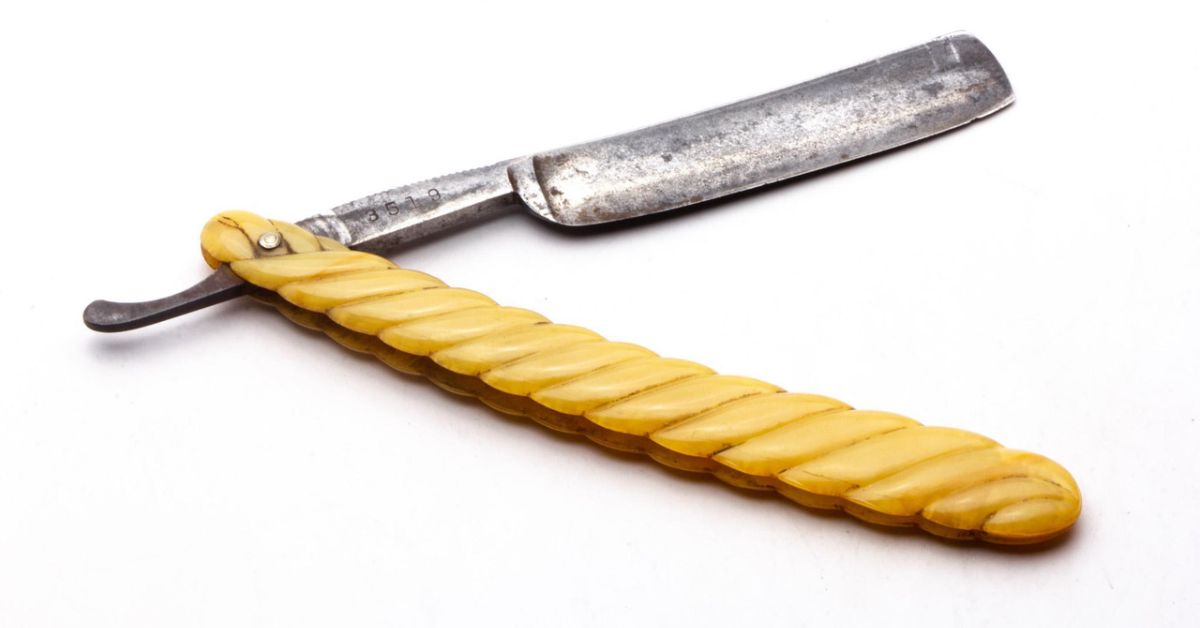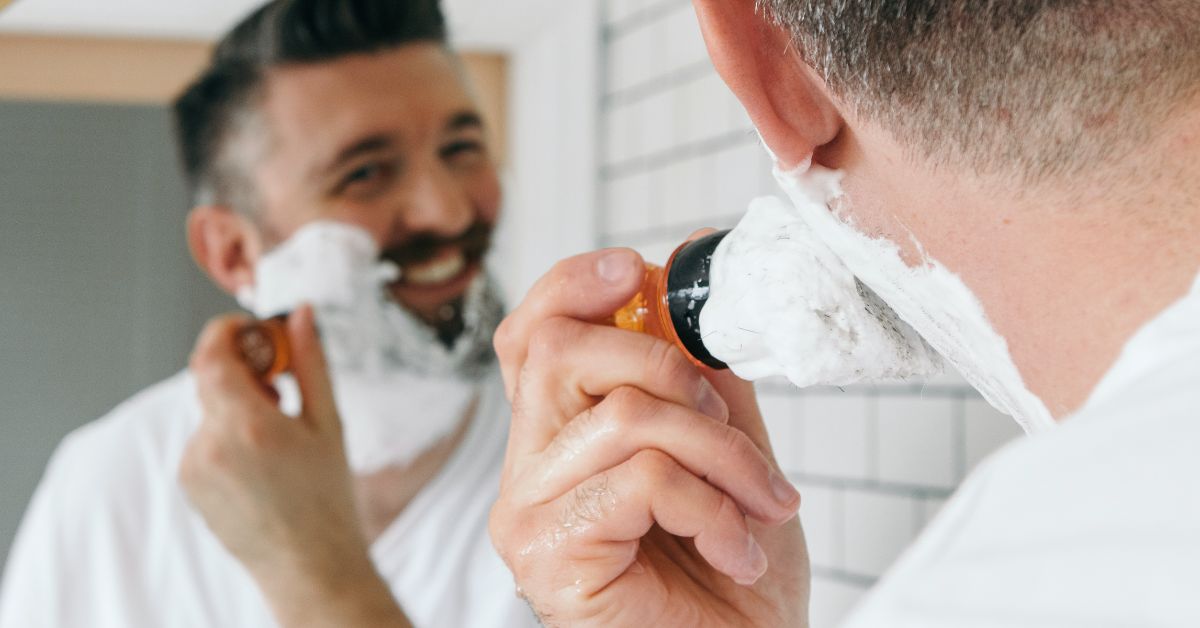The Evolution of Shaving: From the Stone Age To Razors
14th Oct 2024
While shaving has evolved from its rudimentary beginnings to the highly sophisticated techniques and tools we use today, the core concept is relatively the same. The goal has always been to remove unwanted hair from parts of the body. Still, how this process has developed over the years is intriguing. The history of shaving highlights humanity’s innovative spirit and showcases our enduring quest for comfort and efficiency.
Whether you’re an experienced grooming enthusiast or someone who lets it all grow out, exploring the history of shaving offers valuable insights into the tools and techniques we often take for granted. Let’s take a closer look at the fascinating evolution of shaving from the Stone Age to modern-day razors.
The Stone Age: The First Tools Used for Shaving
In the Stone Age, shaving was a rudimentary and sometimes perilous process. Early humans used sharp-edged stones, shells, and even flint to remove hair from their bodies. Believe it or not, these readily available grooming tools were essential for survival. That’s because removing facial and body hair prevented lice and other parasites. While people of this time didn’t fully understand the health risks of lice and parasites, they were certainly still irritating, and shaving got rid of them.
Imagine the grit it took to shear off hair with a piece of flint! While that sounds undesirable, we all have to start somewhere, and these primitive tools marked the birth of grooming practices and set the stage for future innovations.
Ancient Egypt: The Birth of Razors and Early Shaving Creams
Obviously, there wasn’t much development during the early years of shaving, so let’s fast forward to Ancient Egypt. By this point, there’s evidence to suggest that grooming had become an integral part of daily life, especially among the elite. In fact, Egyptians are credited with developing the first metal razors, typically made from copper and bronze. These early razors were more efficient and less painful compared to their Stone Age predecessors.
Surprisingly enough, ancient Egyptians also introduced the concept of shaving creams. They used concoctions made from animal fats and oils to soften the hair and skin, making the shaving process less abrasive. These advancements not only made shaving more practical, but they also turned it into a cultural norm. For Egyptian priests and pharaohs, a clean-shaven appearance symbolized purity and order.

The Middle Ages: The Shift to More Refined Shaving Tools
During the Middle Ages, the concept of personal grooming continued to evolve. Iron and steel replaced copper and bronze, resulting in more durable and sharper razors. The design of these razors also improved, featuring curved blades that provided a closer shave.
Barbershops started popping up and became social hubs where men congregated not just for a shave but also to engage in conversations and exchange news. Barbers played an essential role in society, offering services that ranged from haircuts to medical procedures like bloodletting.
During this time, early versions of the straight razor, or “cut-throat” razor, were introduced. This signaled a significant advancement in shaving technology that we still see to this day. While the shaving tools of the Middle Ages were more refined, the process still required a skilled hand to avoid nicks and cuts.
18th and 19th Centuries: The Industrial Revolution and Mass Production of Razors
In the 1700s, razors underwent significant evolution, setting the stage for the later advancements of the Industrial Revolution. The straight razor was still the most common type, but it started undergoing some changes. For example, people started implementing a folding blade for general usage and safety. They also started to use strops for more effective sharpening.
By the late 1800s, innovations in metallurgy led to improved blade designs and materials, enhancing the sharpness and durability of razors. This era also saw the introduction of early safety razors, which aimed to reduce the risk of cuts and made shaving more accessible for everyday users. These early safety razors paved the way for the mass production of razors that would follow in the Industrial Revolution.
20th Century: The Introduction of Electric Shavers and Advancement of Safety Razors
The 20th century ushered in the age of electric shavers, providing a new level of convenience and efficiency. The first electric shaver was introduced by Jacob Schick in the 1930s. These devices quickly gained popularity, allowing people to achieve a clean shave without water or shaving cream.
Despite the rise of electric shavers, safety razors continued to dominate the market. Companies innovated further, introducing multi-blade razors that promised an even closer shave. The disposable razor, introduced in the latter half of the century, offered unparalleled convenience, reducing the need for regular blade sharpening and maintenance.
Of course, electric shavers still evolved during this era, featuring rotary and foil designs that catered to different shaving preferences. These advancements made shaving quicker and more efficient, appealing to the fast-paced lifestyle of the modern consumer.

The Modern Era: The Evolution of Multi-Blade Razors and Grooming Products
As we approach modern times, we can see how far the evolution of shaving has come since the Stone Age. What started as a basic process has become a highly sophisticated practice. This is largely due to ongoing innovations in razor technology and grooming products. Multi-blade razors are now the norm, offering a smooth, close shave with minimal effort. Brands compete to introduce features like lubricating strips, pivoting heads, and ergonomic handles, all aimed at enhancing the shaving experience.
In addition to razors, there is a vast array of grooming products available, from pre-shave oils and exfoliating scrubs to post-shave balms and moisturizers. These products are designed to protect the skin, reduce irritation, and provide a luxurious grooming experience.
The rise of subscription services has also changed the landscape, offering consumers curated selections of razors and grooming products delivered directly to their doorsteps. This convenience has made it easier than ever for individuals to maintain their grooming routines.
A Recent Return to Form
Despite these modern advancements, there’s been a growing demand for the ways of old. Some newer features are too much for what should be a simple and straightforward task: removing unwanted hair. Plus, not all of these innovations work as well as intended for some grooming enthusiasts. That’s why there’s been a boon in people switching back to safety razors and straight edges.
There’s just something about the simplicity of these tools that appeals to shavers, young and old. Plus, with some modern updates, these razors work even better than their new-age counterparts. If you want to join the revolution, but your old safety razor isn’t what it used to be, no worries—Razor Emporium is here to help. Our vintage razor restoration service can make your old tools work like new again, bringing you back to a simpler time of shaving.






